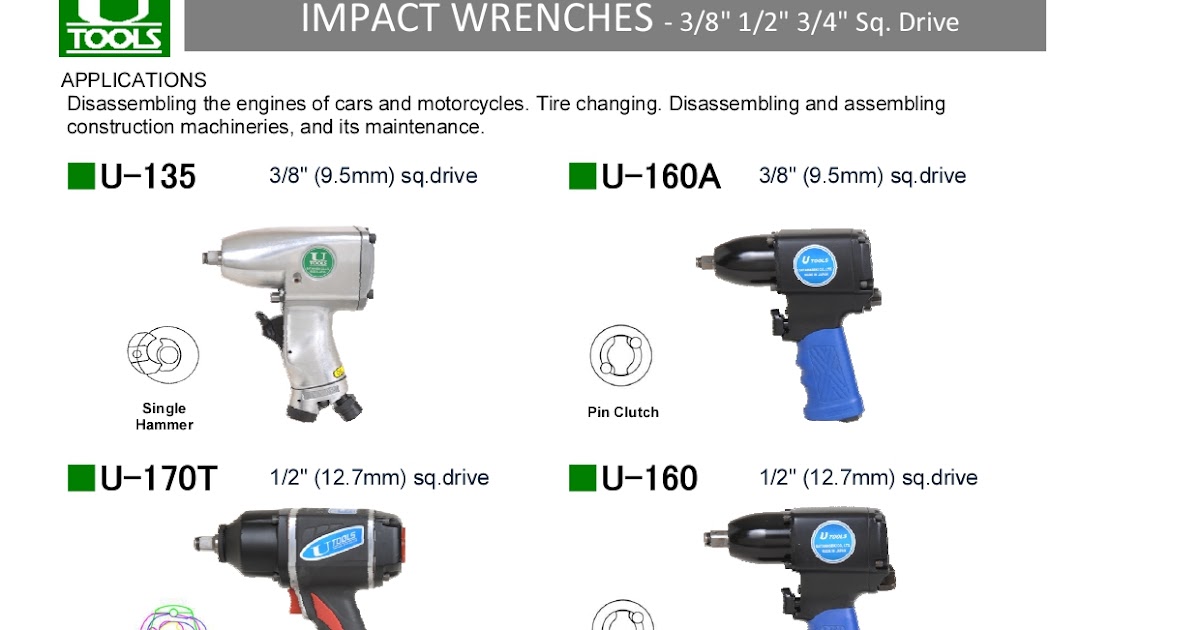In this post you'll learn
Pneumatic impact wrenches are power tools that do require regular maintenance. Poor lubrication is one of the most common causes of tool decay and failure. Here we will go through certain practices that can help you maintain your tools in better conditions.
Work area basicsKeep your work area clean and tidy. Cluttered and dirty work areas can cause you to lose valuable tools and materials.
Wear the right safety equipment: impact wrenches should be used only by those who have been properly trained, following all relevant health and safety policies.
Dress appropriately. Make sure everybody in the room is wearing eye protection. Never operate this tool where there are flammable liquids or gases near it because of potential explosion hazard concerns.
Air motor lubricationWe recommend running an inline, or manually applying some Air Tool Oil through the air intake before every use to prevent corrosion. 10-15 drops of oil into each inlet should do it! It’s also important that you take care of this otherwise your tool will become too dirty and stop working properly – so apply more after every few hours if necessary (or at least when using for extended periods).
Lubricating both the motor and impact mechanism is important for keeping your power tool running smoothly. Because the two systems are not linked, they must be lubricated separately.
A specific airline lubricator is used to lubricate the motor. You may either add it to the FRL or use it right away on the air intake (to tool). Depending on the system, the impact mechanism is lubricated. This mechanism can be either a grease impact mechanism or an oil bath one.
Grease impact mechanismOnly the contact areas between the anvil and hammer are lubricated in this system to minimize friction. Grease should be replenished regularly.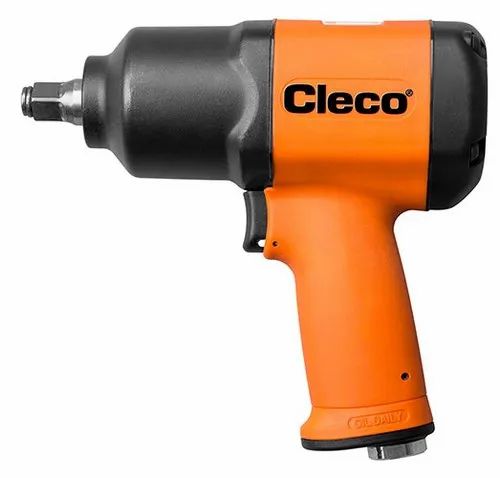
The grease, on the other hand, will flow from the touchpoints to the outside of the hammer over time on account of inertia. Because of this, there will be more friction and heat. If it isn’t maintained, it will eventually stop working. It needs to be serviced regularly.
Oil bath mechanismThe entire front portion of an impact wrench is immersed in oil in a tool with an oil bath system. Because it encompasses the entire system, the oil is always there. The gap is always lubricated, so there is less need for maintenance.
To change the oil, you have to open the wrench carefully. When you are done with the oil, then you need to dispose of it. Replace the old oil with new oil that is only suitable for impact systems, such as SAE30.
Which oil is used in air tools?Mineral oil is made from petroleum and is colorless and odorless. It’s a by-product of the process that makes gasoline. It’s been used as an ingredient in lotions, creams, ointments, and cosmetics for a long time.
Mineral oil is a lubricant that’s good for pneumatic tools. A contractor’s framing gun is an example of a pneumatic tool with a few moving components.
The components of a pneumatic tool slide against each other without actually contacting each other. Between carefully designed pistons, valves, and cylinders, the parts form a waterproof seal. Rubber and nylon o-rings make up the airtight seal.
Because of the mineral oil, the air chambers will be free of dirt and sticky build-up. However, petroleum oils might leave behind remnants or build-up so you must not use them. Air tools work best with mineral oil that has anti-foaming and anti-gumming additives.
Disposing of oil appropriatelyAll need to be aware of the rules and regulations that govern oil disposal. Whether you are an individual, a small company, or a large corporation, it’s in everyone’s best interest to adhere to these standards.
Because of the Environmental and Planning Assessment (EPA)’s requirements, all oil and oil filters from equipment, vehicles, and other products must be disposed of or recycled in an environmentally responsible manner.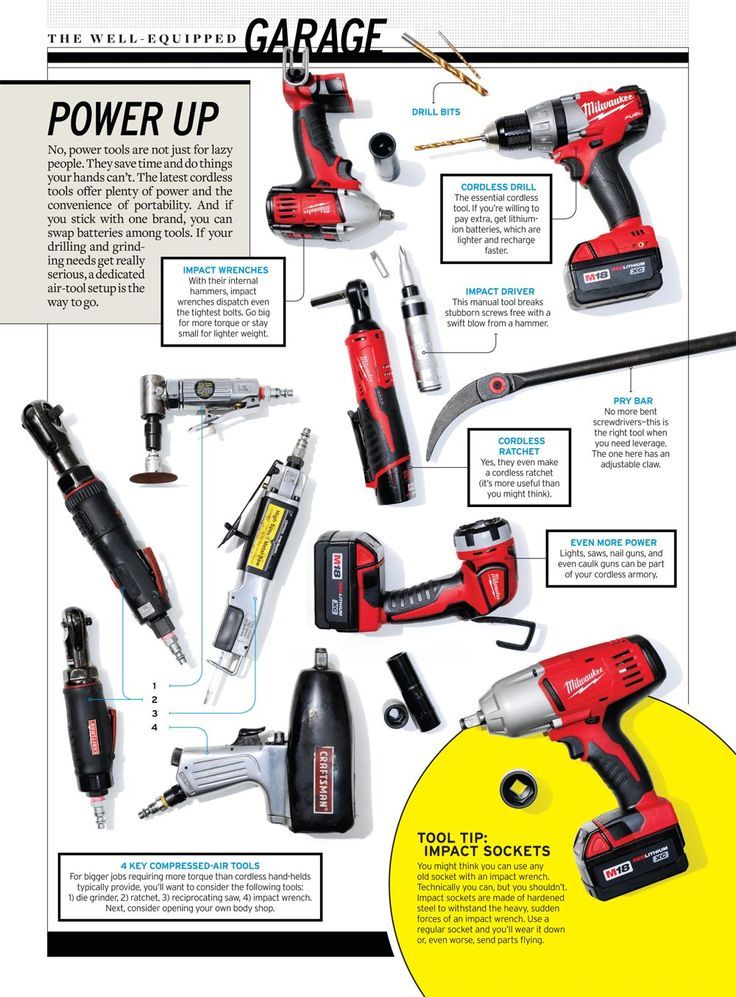 According to the EPA, one oil change’s used oil may pollute 1 million gallons of water. The waste oil can be recycled or refined into lower grades of fuels.
According to the EPA, one oil change’s used oil may pollute 1 million gallons of water. The waste oil can be recycled or refined into lower grades of fuels.
It’s possible that you’ll need to store your used oil before disposing of it. Always follow the best practices when storing used oil. This will help keep your environment healthy and make it easier to handle.
Since oil is not hazardous waste, it does not need to be stored for a certain amount of time. This implies that you may hold off on transporting and recycling used oil until you have enough for reasonable transportation and recycling.
The best way to store used oil is safely and securely. Although there are many ways you can do this, one of the most important factors for safety would have to be proper signage on all containers as well as written procedures that outline when and how certain tasks should take place with your facility’s discards.
Avoid mixing them up with other wastes by including appropriate warnings about what they contain. Putting these instructions into practice will help prevent accidents from happening during storage or transportation!
Putting these instructions into practice will help prevent accidents from happening during storage or transportation!
You may also have your used oil collected by a local body shop or service station, which will recycle the oil for you. It is not legal to dispose of used oil in your regular trash cans or toss it on the side of the road.
Disposing of oil filters correctlyFilters must also be disposed of correctly since, at the very least, trace amounts of used oil abound. You have three alternatives for recycling your used oil filters:
Pneumatic impact wrenches are a very useful tool to have in your impact wrench kit, but they do require regular maintenance.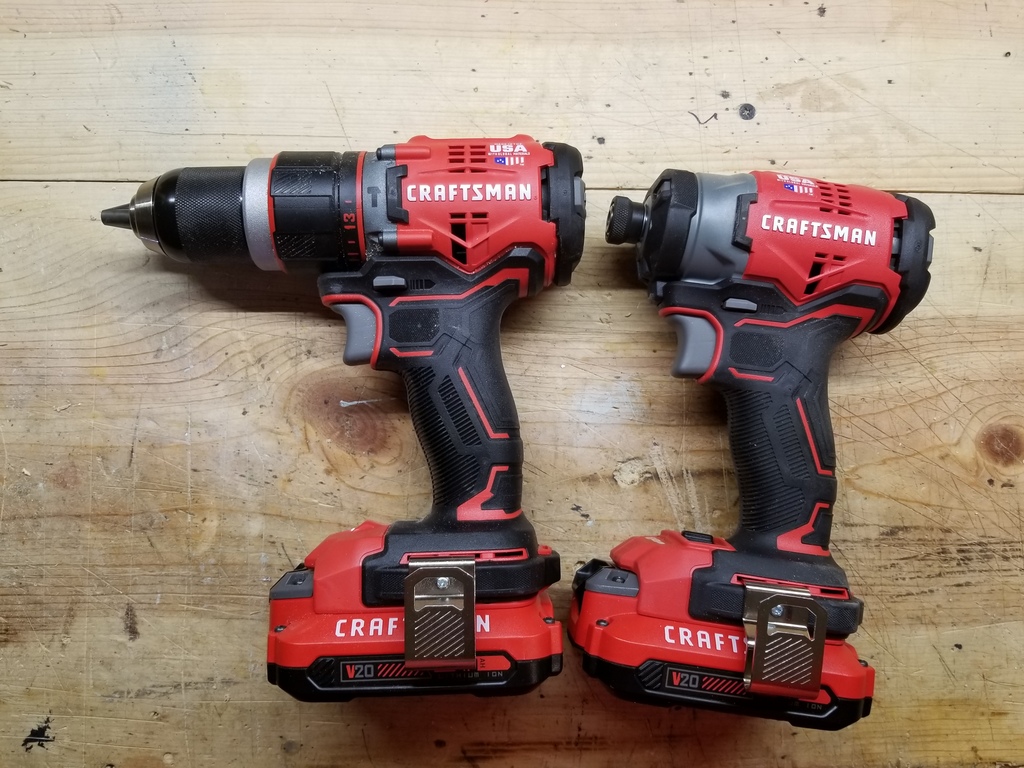 Poor lubrication is one of the most common causes of tool decay and failure. Following these simple guidelines, your wrench will be ready to use at a moment’s notice.
Poor lubrication is one of the most common causes of tool decay and failure. Following these simple guidelines, your wrench will be ready to use at a moment’s notice.
December 17, 2019
Tire changing Energy Impact Wrenches Tools
Has your pneumatic impact wrench started to become unreliable, not perform as it should or suddenly stopped working? One of the most common reasons for lack of durability and premature tool failure is inadequate lubrication – and not just of the motor, but also the impact mechanism.
It’s well known that regular maintenance is vital to make sure your tool is performing at its best. In the same way that you keep the oil levels topped up in your car, it’s important to regularly check the oil and grease in your tool.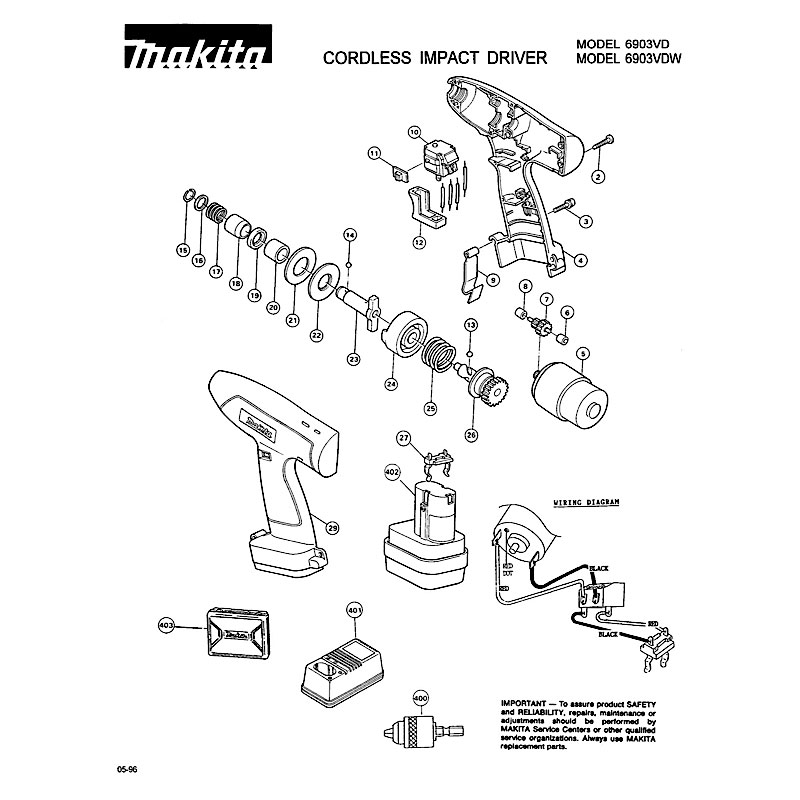 A little maintenance can go a long way towards improving its durability and longevity. In this blog we’ll look at the two different areas for lubrication and explain how you can maintain your impact wrench properly to ensure that it keeps delivering excellent performance over a long lifetime. We’ll also discuss how often you should lubricate your air tools, and what type of oil you should use so you can make sure you’re working as productively as possible.
A little maintenance can go a long way towards improving its durability and longevity. In this blog we’ll look at the two different areas for lubrication and explain how you can maintain your impact wrench properly to ensure that it keeps delivering excellent performance over a long lifetime. We’ll also discuss how often you should lubricate your air tools, and what type of oil you should use so you can make sure you’re working as productively as possible.
When it comes to lubrication, there are two parts of the wrench to consider: a. The motor b. The impact mechanism
The two parts of an impact wrench that need lubricating: the motor and the impact mechanism.
You may be aware that the motor needs regular lubrication, but did you know that the impact mechanism needs lubrication too? Both systems are independent from one another, and therefore must be lubricated separately. The motor is lubricated by a specific airline lubricator that you add in the FRL or directly at the air inlet (at the tool). Whereas the impact mechanism is lubricated in one of two ways depending on the system the tool uses. These are:
Whereas the impact mechanism is lubricated in one of two ways depending on the system the tool uses. These are:
Lubricating the impact mechanism is vital to minimize the friction between the impact contact points of the anvil and hammer, and therefore keeps the wrench running in excellent condition. Let’s look at these two systems in greater detail:
Impact mechanism with grease lubrication
In this system grease is applied only on the contact points between the anvil and hammer to prevent friction between them.
An impact wrench mechanism with a grease system needs regular grease replenishment.
However, over time, the grease will move from the contact points to the outside of the hammer (due to principles of inertia) and so will become absent in this critical area.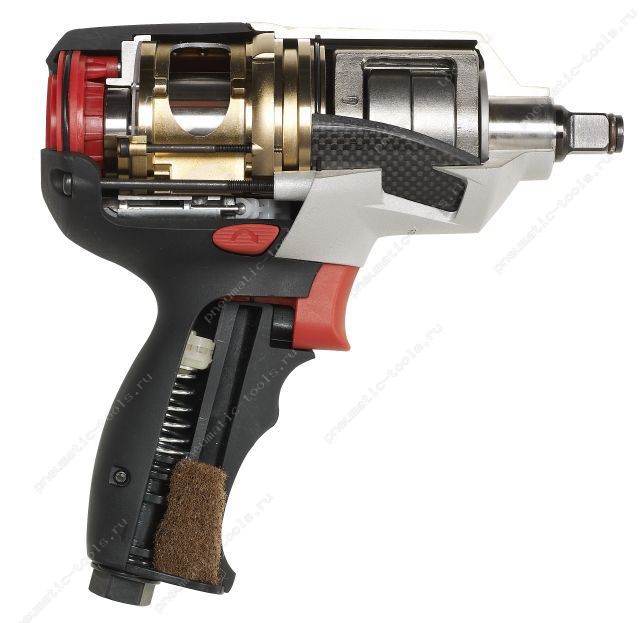 As a result, there will be increased friction, and heat, and the tool will ultimately stop working. It needs regular grease replenishment.
As a result, there will be increased friction, and heat, and the tool will ultimately stop working. It needs regular grease replenishment.
Impact mechanism with oil lubrication
In a tool which uses oil bath system, the entire front part of the impact wrench is submerged in oil. There is no question as to whether the oil is present or not, because it surrounds the whole system. One advantage is that lubrication is always present on the contact points, and therefore it requires less maintenance. Maintenance can be trickier, but, with the right tips and pieces of advice, it become very easy to do – as outlined below.
To lubricate the impact mechanism properly, we recommend you open the tool and add grease carefully with your hands or a brush on the critical contact points: the anvil (area in contact with hammer) and in the hammer’s inner area.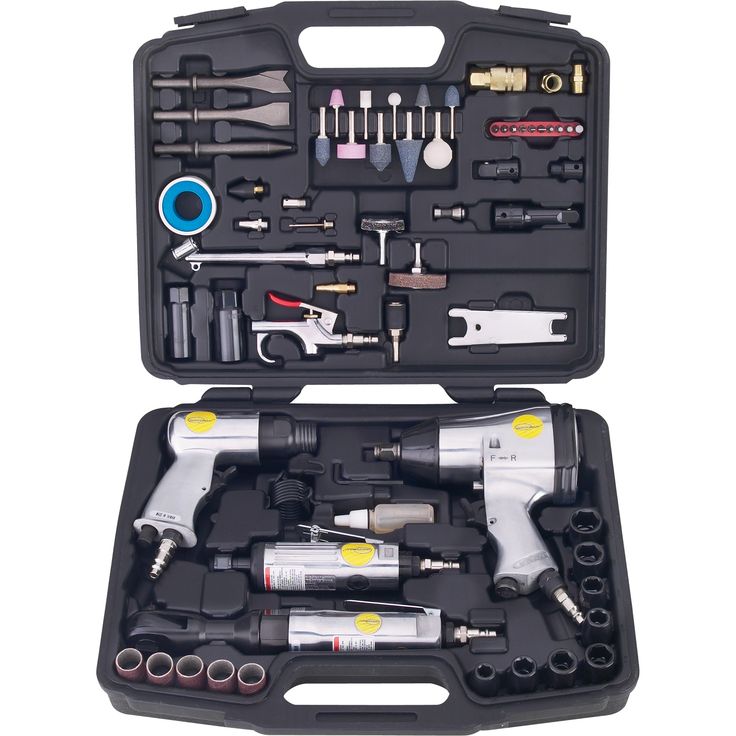 Most pneumatic tools have multiple grease fittings, and if it isn’t possible to lubricate the impact mechanism as described above, it is sometimes possible to add grease through these holes. If you aren't sure where they are, check your manual or ask your service provided. Don’t forget to remove the old grease before adding the new one!
Most pneumatic tools have multiple grease fittings, and if it isn’t possible to lubricate the impact mechanism as described above, it is sometimes possible to add grease through these holes. If you aren't sure where they are, check your manual or ask your service provided. Don’t forget to remove the old grease before adding the new one!
| Tool operating conditions: | Tool frequency of use : low | Tool frequency of use: high |
| Low | Around 6 months | Around 3 months |
| High | Around 3 months | Around 1 month |
To change the oil, you have to open the tool carefully, drain the used oil and dispose of it appropriately, and then replace it with a new oil. It is imperative that you use oil, which is only suitable for impact systems, for example oil type SAE30. Note: this is different oil from oil used in air lubrication.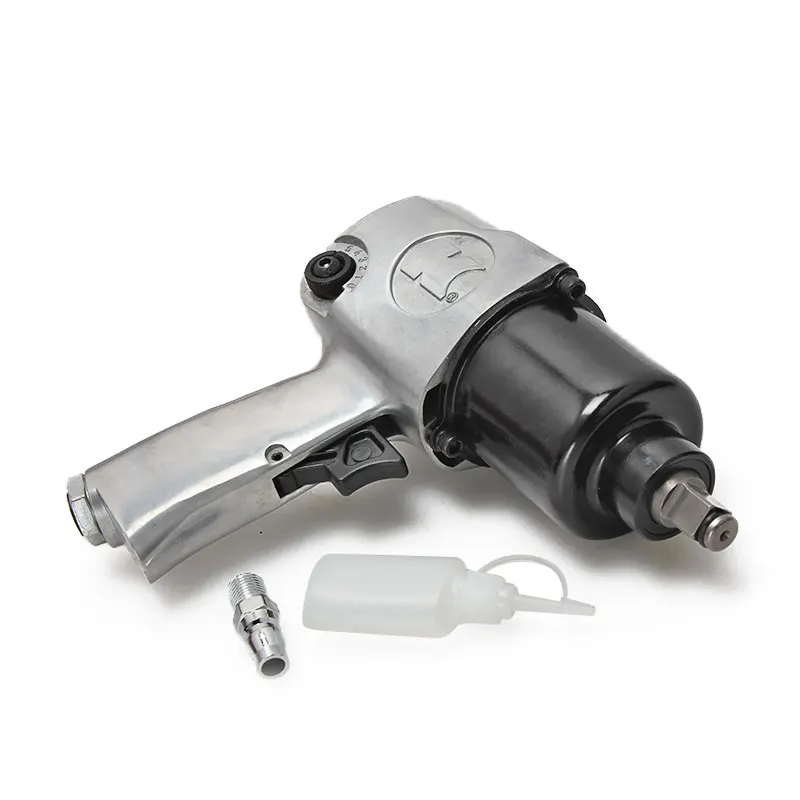
| Tool operating conditions: | Tool frequency of use : low | Tool frequency of use: high |
| Low | Around 12months | Around 6 months |
| High | Around 6 months | Around 2 months |
The frequency at which lubrication checks should be carried out depends on your usage and maintenance schedule, and we recommend following manufacturers’ advice here.
Antoine Tourneux , Global Product Marketing Manager, Vehicle Service Air Tools, at Chicago Pneumatic
Note: regardless of the lubrication type, only use cleaners and grease that have been recommended by the manufacturer. Double check with the tool manual or your service provider if you are not sure.
If the lubrication is applied correctly and frequently, the durability of a tool with a grease mechanism and an oil batch mechanism will be very similar.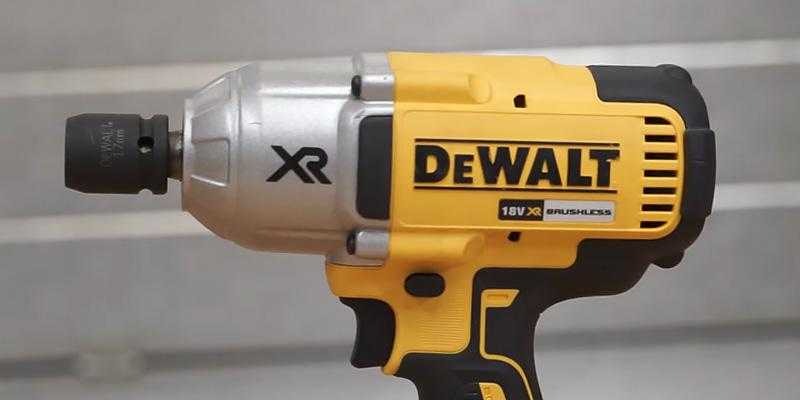 However, most of the time, grease is not added often enough, and the impact mechanism durability decreases considerably. An impact wrench that has not been lubricated properly will operate with a lower power output, and if the tool is continually used when starved of grease, the internal components will wear down and the tool will not last nearly as long as it could.
However, most of the time, grease is not added often enough, and the impact mechanism durability decreases considerably. An impact wrench that has not been lubricated properly will operate with a lower power output, and if the tool is continually used when starved of grease, the internal components will wear down and the tool will not last nearly as long as it could.
Improve the durability of your air tool by regularly lubricating the motor and impact mechanism.
Antoine Tourneux , Global Product Marketing Manager, Vehicle Service Air Tools, at Chicago Pneumatic
Read more
December 17, 2019
Tire changing Energy Pneumatic wrenches Tools
Is your air impact wrench becoming unreliable, not working well or has suddenly stopped working? One of the most common causes of poor tool life and premature tool failure is insufficient lubrication - not only of the motor, but also of the impact mechanism.
It is well known that regular maintenance is essential to keep your tool performing optimally. Just like with the oil level in a car, it is important to regularly check the presence of oil and grease in your tool. Minimal maintenance means a lot to increase its reliability and service life. In this blog, we'll take a look at two different lubrication zones and explain how to properly maintain an impact wrench to maintain its superior performance over a long service life. We will also discuss how often an air tool should be lubricated and what type of oil to use to ensure maximum performance.
With regard to lubrication, two parts of the wrench must be observed: a. Dvigatelb. Impact mechanism
The two parts of an impact wrench that require lubrication are the motor and the impact mechanism.
You probably remember that the engine needs regular lubrication, but did you know that the impact mechanism also needs lubrication? Both systems are independent of each other and therefore need to be lubricated separately.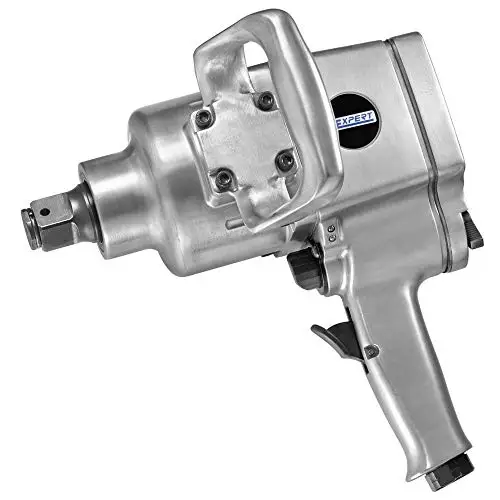 The motor is lubricated by a special air line lubricator, which is mounted on the FRL or directly on the air inlet (on the tool). In turn, the impact mechanism is lubricated in one of two ways, depending on the system used in the tool. This is:
The motor is lubricated by a special air line lubricator, which is mounted on the FRL or directly on the air inlet (on the tool). In turn, the impact mechanism is lubricated in one of two ways, depending on the system used in the tool. This is:
The lubrication of the hammer mechanism is necessary to minimize friction at the points of contact between the shank and the hammer, and therefore to keep the wrench in good condition. Consider these two systems in more detail:
Grease-lubricated hammer mechanism
In this system, grease is applied only to the contact points of the shank and hammer to prevent friction between them.
Grease-lubricated impact wrench requires regular relubrication.
However, over time, the lubricant shifts from the contact points to the outer part of the hammer (due to inertia) and therefore is not present in this critical area. As a result, friction increases, heating occurs, and the tool eventually stops working. Requires regular lubrication.
As a result, friction increases, heating occurs, and the tool eventually stops working. Requires regular lubrication.
Oil lubricated impact mechanism
In a tool using an oil bath system, the entire front of the impact wrench is immersed in oil. There is no doubt about the presence or absence of oil, because it surrounds the entire system. One of the advantages is that lubricant is always present at the contact points and therefore less maintenance is required. Maintenance can be tricky, but if you follow the right tips and tricks below, it's very easy to do.
To properly lubricate the hammer mechanism, it is recommended that you open the tool and carefully apply grease with your hands or a brush to critical contact points: the shank (in contact with the hammer) and the inside of the hammer. Most air tools have several grease fittings, and if it is not possible to lubricate the hammer mechanism as described above, it is sometimes possible to pump grease through these holes. If you are not sure where they are located, check your owner's manual or contact your service representative. Don't forget to remove the old grease before applying the new one!
Most air tools have several grease fittings, and if it is not possible to lubricate the hammer mechanism as described above, it is sometimes possible to pump grease through these holes. If you are not sure where they are located, check your owner's manual or contact your service representative. Don't forget to remove the old grease before applying the new one!
| Tool operating conditions: | Tool frequency: low | Tool frequency: high |
| Low | About 6 months | About 3 months |
| High | About 3 months | About 1 month |
To change the oil, carefully open the tool, drain and properly dispose of the used oil, and then replace it with new oil. Be sure to use an oil that is suitable for impact systems, such as SAE30 type oil. Note: This oil is different from the one used for air lubrication.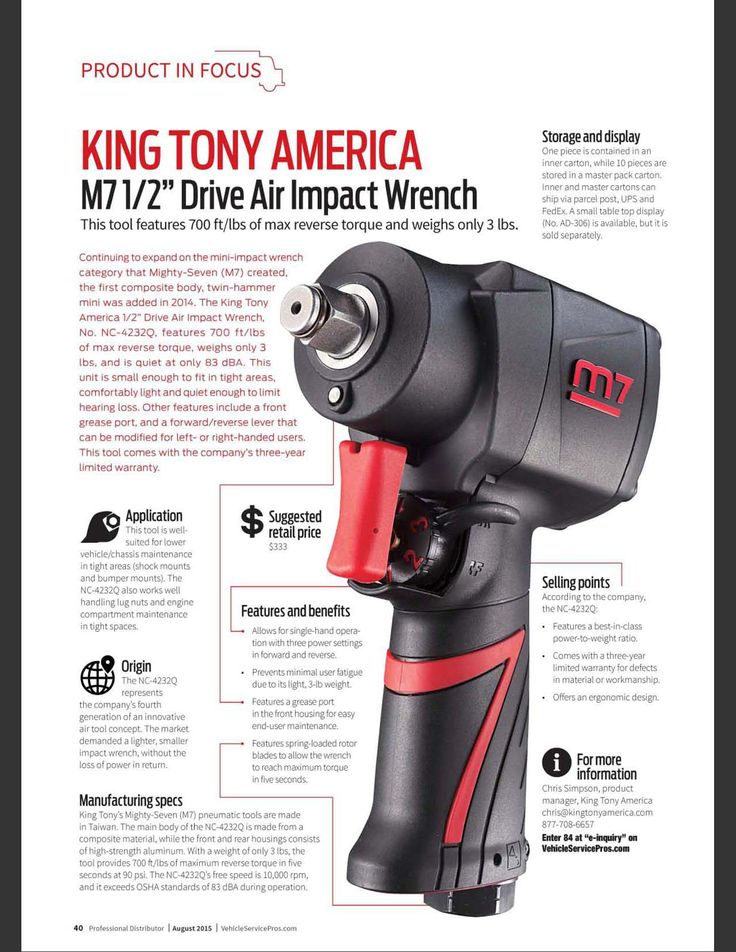
| Tool operating conditions: | Tool frequency: low | Tool frequency: high |
| Low | About 12 months | About 6 months |
| High | About 6 months | About 2 months |
Lubrication check frequency depends on usage and maintenance schedule. In this regard, we advise you to follow the manufacturer's recommendations.
Antoine Tourneux , Global Product Marketing Manager Chicago Pneumatic, Automotive Pneumatic Tools Industry
Note: Regardless of the type of lubricant, use only cleaners and lubricants recommended by the manufacturer. If you are unsure, consult the instrument's instruction manual or service provider.
If the lubricant is applied correctly and frequently, the life of grease lubricated and oil bath tools will be very similar.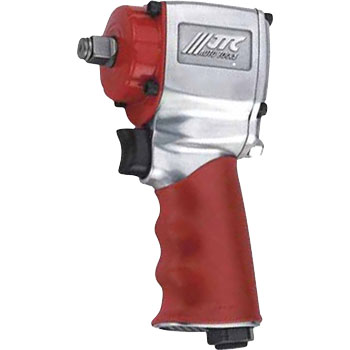 However, in most cases, lubrication is not applied often enough and the life of the impact mechanism is greatly reduced. An impact wrench that is not properly lubricated will produce less power output, and if the tool is continuously used with insufficient lubrication, internal components will wear out and tool life will be shortened.
However, in most cases, lubrication is not applied often enough and the life of the impact mechanism is greatly reduced. An impact wrench that is not properly lubricated will produce less power output, and if the tool is continuously used with insufficient lubrication, internal components will wear out and tool life will be shortened.
Increase the life of your air tool by regularly lubricating the motor and impact mechanism.
Antoine Tourneux , Global Product Marketing Manager Chicago Pneumatic, Automotive Pneumatic Tools Industry
Find out more
Pneumatic wrench is an indispensable tool for working with threaded connections. It is widely used in car services and numerous construction works. Excellent for tightening nuts and loosening tight joints.
The design of the pneumatic wrench is quite simple, but at the same time it consists of many details that are incomprehensible at first glance. Often, the parts of the mechanism have sufficient strength for a long service life and fail only due to wear or increased loads. Most of these problems can be detected at home without the need to contact specialists. How to determine the location of the breakdown and fix the problem, we will tell in this article.
To understand the cause of a tool breakage, you should understand how it works (fortunately, the mechanism here is very simple). The pneumatic wrench consists of a fitting to which the air hose from the compressor is attached. Next comes the start button, which directs the flow of air into the cylinder with the rotor and blades spun by high pressure. The motor transmits rotational movements to the stop, where nozzles for tightening nuts are installed. If the wrench is impact, then between the stop and the rotor, there is an impact mechanism.
For greater clarity and understanding of the wrench device, below are photos and videos of the tool in the analysis.
Breakdowns or malfunctions in the wrench can be caused by wear, damage or severe contamination of its mechanism. There are many video faults, below we present the most common ones.
Parts that can cause this problem include bearings, rotor blades, valves, springs, impact cams, seals, and speed control. Depending on the level of damage to the part, it can be repaired or replaced. Let's take a look at how you can bring your wrench back to life.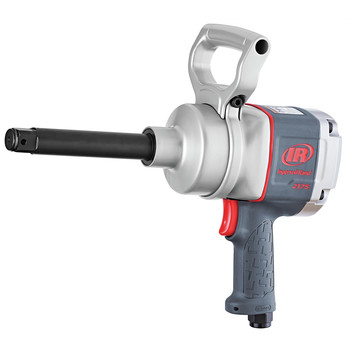
Usually this process does not cause any particular difficulties, due to the simplicity of the design of the tool and the minimum number of unscrewed elements. The first thing to do to get to the "insides" is to unscrew a few bolts on the back cover with a hex. After unscrewing, remove the cover with gasket and speed control. Having gained access to the main mechanism, carefully remove it from the case, be sure to remember the sequence of parts. If you are afraid to mix up the parts during assembly, take a photo or video of the disassembly.
After taking out all the parts, the first thing we have to do is evaluate their appearance. Parts must be lubricated, free of rust and oxidation. Next, we need to inspect the mechanism for chips. If parts are damaged, they must be replaced. You can read the name of the pneumatic wrench parts in the image above.
If your tool has been in use for many years and has not been used for a long time before the failure, then it is possible that the cause of the breakdown lies in the banal corrosion and rust that formed on the mechanism during a long time of inactivity of the tool.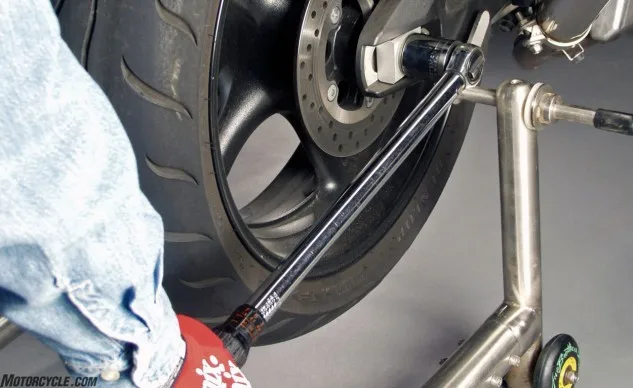 The solution to this problem may be elementary cleaning of parts followed by lubrication. Even if this method does not restore the working capacity of your tool, in order to work in the future, it should not be dirty and without lubrication.
The solution to this problem may be elementary cleaning of parts followed by lubrication. Even if this method does not restore the working capacity of your tool, in order to work in the future, it should not be dirty and without lubrication.
The tool may not function or work properly even with a clean, lubricated mechanism. In this case, the cause of the malfunction lies clearly in the breakdown or wear of a certain part. Here you should carefully inspect each component for chips, cracks or abrasions. Closer attention should be paid to bearings and rotor blades, as these parts are most prone to mechanical damage.
You should also carefully inspect the cylinder block and make sure that the rotor blades fit snugly against its walls. This happens when the wrench has been running without oil for a long time, as a result of which the rotational force drops significantly. If there is a clear play, you have 2 options for repairing an air wrench: installing a new block or grinding the old one. Grinding is required to be carried out on the machine for a perfectly flat surface.
Grinding is required to be carried out on the machine for a perfectly flat surface.
There are many types of breakdowns, but they are all solved by identifying and replacing the defective part. Therefore, in order to repair your wrench, you should disassemble it, assess the condition of the mechanism, find the broken part and replace it. Replacement parts are usually available from specialized workshops. They cost much less than a new wrench and you can install them yourself. New parts will work for more than one year, they only need to be lubricated and cleaned in a timely manner.
The life of any power tool depends largely on the quality of the lubrication of its parts. The easier the mechanism will work, the less wear will occur. If you want the wrench to serve you faithfully for more than one year, follow the elementary rules for servicing the tool.
The wrench mechanism does not need to be disassembled to add oil. It is enough to add about 8-10 drops of lubricant to the tool nozzle where the air hose is installed, then start and let it idle for 30 seconds so that the oil is quickly distributed over the parts. This procedure should be repeated every 3-4 hours during continuous operation, and also before cleaning the instrument for storage.
This procedure should be repeated every 3-4 hours during continuous operation, and also before cleaning the instrument for storage.
If you use the tool all the time, adding oil every 4 hours can become a chore. To eliminate unnecessary distractions from your workflow, install a wrench oiler (lubricator) that will supply oil gradually during operation. This method is more convenient and provides constant lubrication of parts, just do not forget to add oil to the lubricator itself.
In addition to the main mechanism of the rotor, there are parts in the nutrunner that require grease, non-flowing lubrication. These items include bearings, couplings and impact wrench hammers. For this procedure, the tool will need to be disassembled to get to the necessary parts. Fortunately, one lubricant is enough for 50-60 hours of continuous operation.
Summing up this article, we can make a short conclusion. You can always repair a pneumatic wrench with your own hands, contacting a service center only for the purchase of replacement parts.